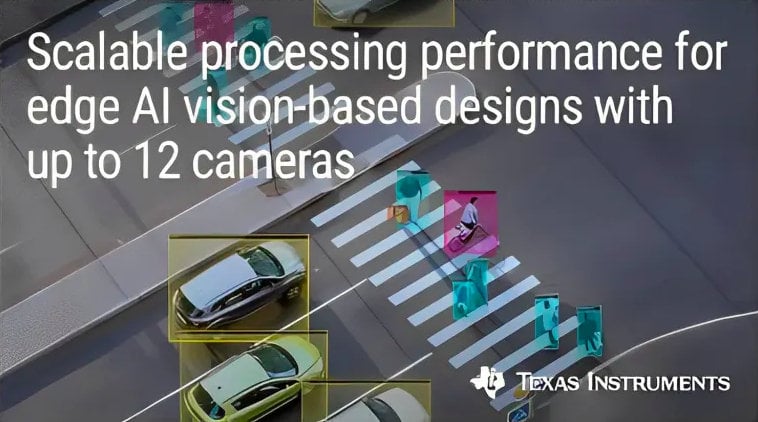www.ptreview.co.uk
16
'23
Written on Modified on
TEXAS INSTRUMENTS INTRODUCES NEW VISION PROCESSOR FAMILY
Designers can easily and affordably add vision and AI processing for up to 12 cameras in building, industrial and retail automation applications.

To build on innovations that advance intelligence at the edge, Texas Instruments (TI) recently introduced a new family of six Arm® Cortex®-based vision processors that allow designers to add more vision and artificial intelligence (AI) processing at a lower cost, and with better energy efficiency, in applications such as video doorbells, machine vision and autonomous mobile robots.
This new family, which includes the AM62A, AM68A and AM69A processors, is supported by open-source evaluation and model development tools, and common software that is programmable through industry-standard application programming interfaces (APIs), frameworks and models. This platform of vision processors, software and tools helps designers easily develop and scale edge AI designs across multiple systems while accelerating time to market.
Scalable AI camera performance at the edge with vision processors
TI’s new vision processors bring intelligence from the cloud to the real world by eliminating cost and design complexity barriers when implementing vision processing and deep learning capabilities in low-power edge AI applications.
Vision processors in this family include the:
- AM62A3, AM62A3-Q1, AM62A7 and AM62A7-Q1, which support one to two cameras at less than 2 W in applications such as video doorbells and smart retail systems. This family includes the AM62A3, the industry’s lowest-cost 1-TOPS vision processor (US$12 in 1,000-unit quantities).
- AM68A, which enables one to eight cameras in applications like machine vision, with up to 8 TOPS of AI processing for advanced video analytics.
- AM69A, which achieves 32 TOPS of AI processing for one to 12 cameras in high-performance applications such as edge AI boxes, autonomous mobile robots and traffic monitoring systems.
Beginning in Q2 2023, designers can accelerate time to market for their edge AI applications with a public beta of TI’s free open-source tool, Edge AI Studio. This feature-rich, web-based tool allows users to develop and test AI models quickly and easily using user-created models and TI’s optimized models, which can also be retrained with custom data.

